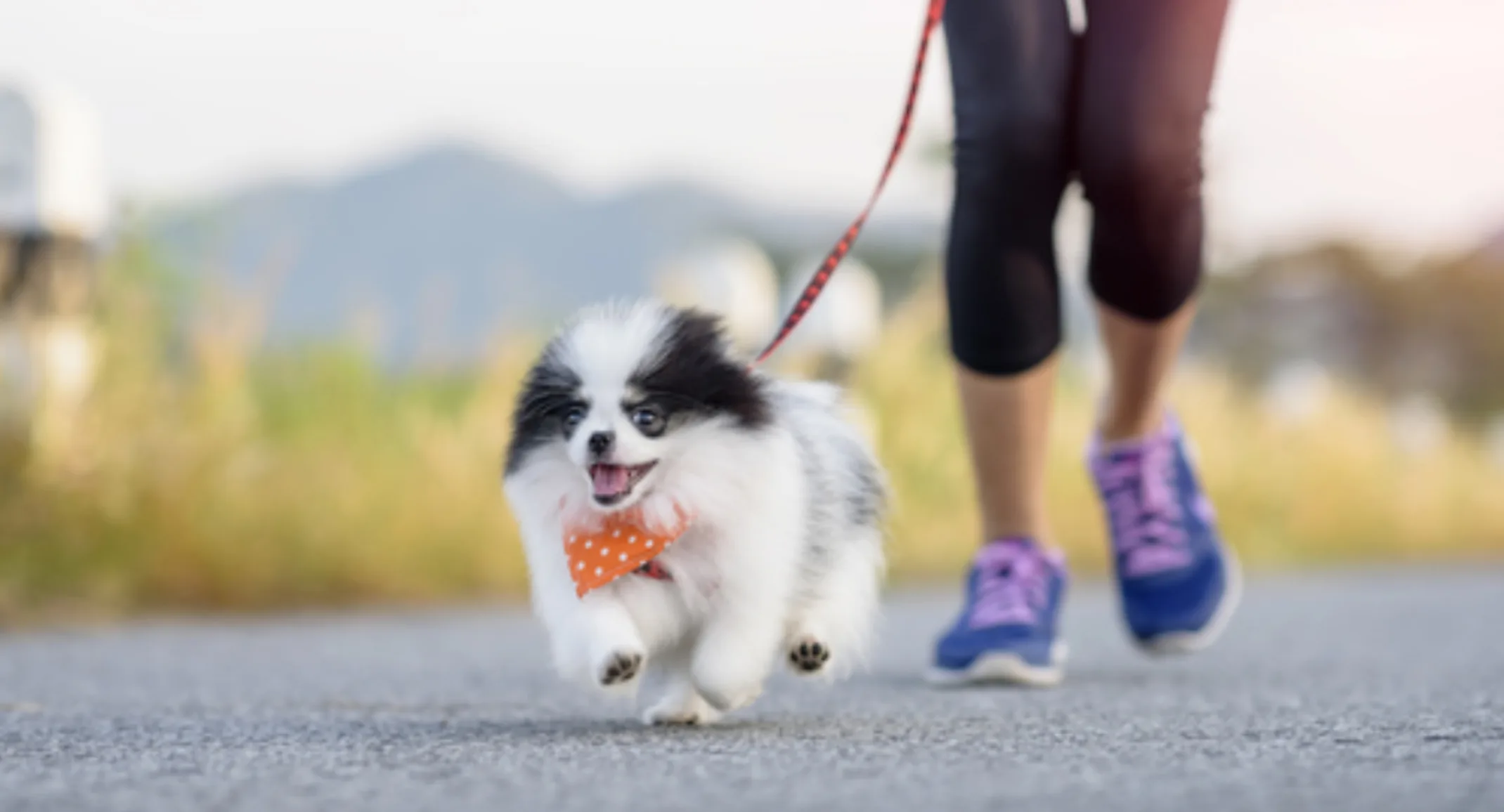Dog bite wounds are a common veterinary emergency. Dog fights often occur at dog parks or doggy daycares or while on a walk or at a friend’s house. If another dog snaps and bites your own pup, the experience can be traumatic and chaotic for you and your dog and you may not know how best to respond.
Here’s what you should do if your dog is attacked by another dog.
Do Not Stand Between the Dogs
You want to protect your dog at all costs, and your natural instinct likely is jumping between the dogs to stop the attack. However, the other dog could turn on you and seriously injure you.
Instead: If your dog is leashed when attacked, use the leash to attempt to pull them away from the encounter, ensuring you stay at a distance from the dogs. If this isn’t possible, you can use water from a water bottle or hose to startle the dogs and break them apart.
Remain Calm
The situation is stressful, but you need to remain calm to appropriately care for your dog. In addition, if you are overwrought, your dog will pick up on your emotions and the situation may escalate.
Instead: Try to distract the dogs and break up the fight as calmly as possible, and never act aggressively toward the other dog’s owner, which could cause their dog to attack you.
Exchange Information
Before leaving the attack scene, calmly exchange relevant details with the other dog’s owner. You should both gather as much information as possible, including:
The other dog owner’s name, address, and contact information
The other dog’s vaccination records—especially rabies. You may need to exchange contact information so the owner can send you or your veterinarian the dog’s rabies certificate.
The attacking dog’s description, including breed, size, color, and other physical attributes
Names and contact information of any witnesses
Photos of your dog, including all injuries
Assess Your Dog’s Injuries
Injured dogs can be aggressive, especially after a traumatic incident. Speak softly and move slowly as you gently assess your dog’s wounds.
Hold pressure on any actively bleeding wounds, allowing your dog to walk on their own only when the bleeding has stopped. This will help keep them calm, and you can observe their gait and determine any limb injuries. If necessary, carry your dog but be cautious to prevent further damage.
Take Your Dog to a Veterinarian
Even if your dog appears okay, he/she needs to be examined by a veterinarian. There could be puncture wounds hidden under the fur or an injury you can’t see. Additionally, teeth puncture wounds can be much deeper than they appear and severe wounds may penetrate your dog’s chest or abdominal cavity. Bite wounds also are likely to become infected if not cleaned appropriately. Depending on the severity of their injuries, your dog may need antibiotics and pain medications.
ER VS. URGENT CARE VS. PRIMARY CARE VET
Go to a veterinary ER: ongoing bleeding (especially bleeding that occurs with every heartbeat i.e. spurting); bite or puncture wounds along the neck, chest, or abdomen; dog vocalizing
Go to a veterinary urgent care: visible wounds but no active bleeding; limping or other signs of pain
Wait for an appointment with your primary care vet: no visible wounds; no signs of pain or distress
Always call ahead to see what is the best option for your dog. Your dog may also need diagnostics, such as x-rays or ultrasound, to determine if they sustained internal injuries. If the attacking dog was not vaccinated for rabies or has an unknown vaccine history, your veterinarian will likely give your dog a rabies booster as well.
Follow Your Veterinarian’s Instructions
Your dog’s activity may be restricted for a period to ensure their wounds heal properly. Follow your veterinarian’s instructions carefully, and don’t discontinue medications before finishing the recommended drug course.
Don’t allow your dog to lick, bite, or scratch their wound, and ask your veterinarian for an e-collar if necessary to prevent your dog from contaminating or further injuring the wound. In addition, ensure you take your dog for recheck examinations so your veterinarian can assess their progress and remove any sutures or drains.
Pay Attention to Your Dog’s Behavior
Dogs can be severely traumatized after a dog attack and may exhibit behavioral issues indicating they have lingering effects. If your dog is suffering from emotional trauma, signs may include:
an unwillingness to play and interact with other dogs
defensive behavior toward other dogs (snarling, growling, or arching their back)
increased anxiety when left alone
If your dog exhibits any of these behaviors, they need medical attention. Left untreated, they could become a danger to themselves, other pets, and humans. A behavioral specialist may be able to retrain your dog’s response to emotional or situational triggers.
What To Do If My Dog Bites Another Dog
If your dog is the aggressor, remain calm and attempt to distract your dog without getting between the dogs. Steps to take include:
Get your dog on a leash: If your dog is off-leash, carefully get them back on-leash as soon as possible after the dogs separate. Your dog will be highly stressed, and may bite anyone who enters their space, including you.
Allow your dog to calm down: Take your dog to a quiet area where they can’t see the other dog so they can calm down. Do not try to re-release your dog to continue playing with other dogs.
Help the other dog: Exchange information with the other dog owner and help the owner get their dog to the veterinarian if that is possible without the dogs interacting.
Seek professional help: A veterinarian should evaluate your dog to ensure a medical issue didn’t cause the incident. If a health problem is ruled out, you can seek a behavioral specialist’s help to address your dog’s aggressive behavior.
Check your dog for injuries: Even if your dog was the aggressor, he or she may have sustained injuries from the dog fight too. Seek veterinary care if you see any bite wounds or puncture wounds, and don’t forget to ask for the other dog’s rabies and vaccine information.
Muzzle train your dog: If your dog is frequently aggressive toward other dogs, they may need to wear a muzzle when in public.
Preventing Dog Bites
Not every dog bite incident can be prevented, but you can take steps to decrease your dog’s risk of biting other dogs and of being bitten. These include:
Socialize your dog appropriately: Expose your dog to numerous sights, sounds, experiences, people, and other pets when they are young to help them become a well-adjusted, well-behaved adult dog.
Keep your dog on a leash: Keep your dog leashed in unfamiliar places or around unfamiliar people or dogs.
Learn how to recognize anxiety: Learn what body language indicates a dog is anxious. Anxious dogs can escalate to aggressiveness if they feel pressured. When you know your dog’s anxiety signs, you can remove them from the situation before a problem occurs.
This information should help you know how to respond if your dog is bitten or bites another dog. These situations are stressful, but being prepared can help you stay calm, so you can provide the care your dog needs.

